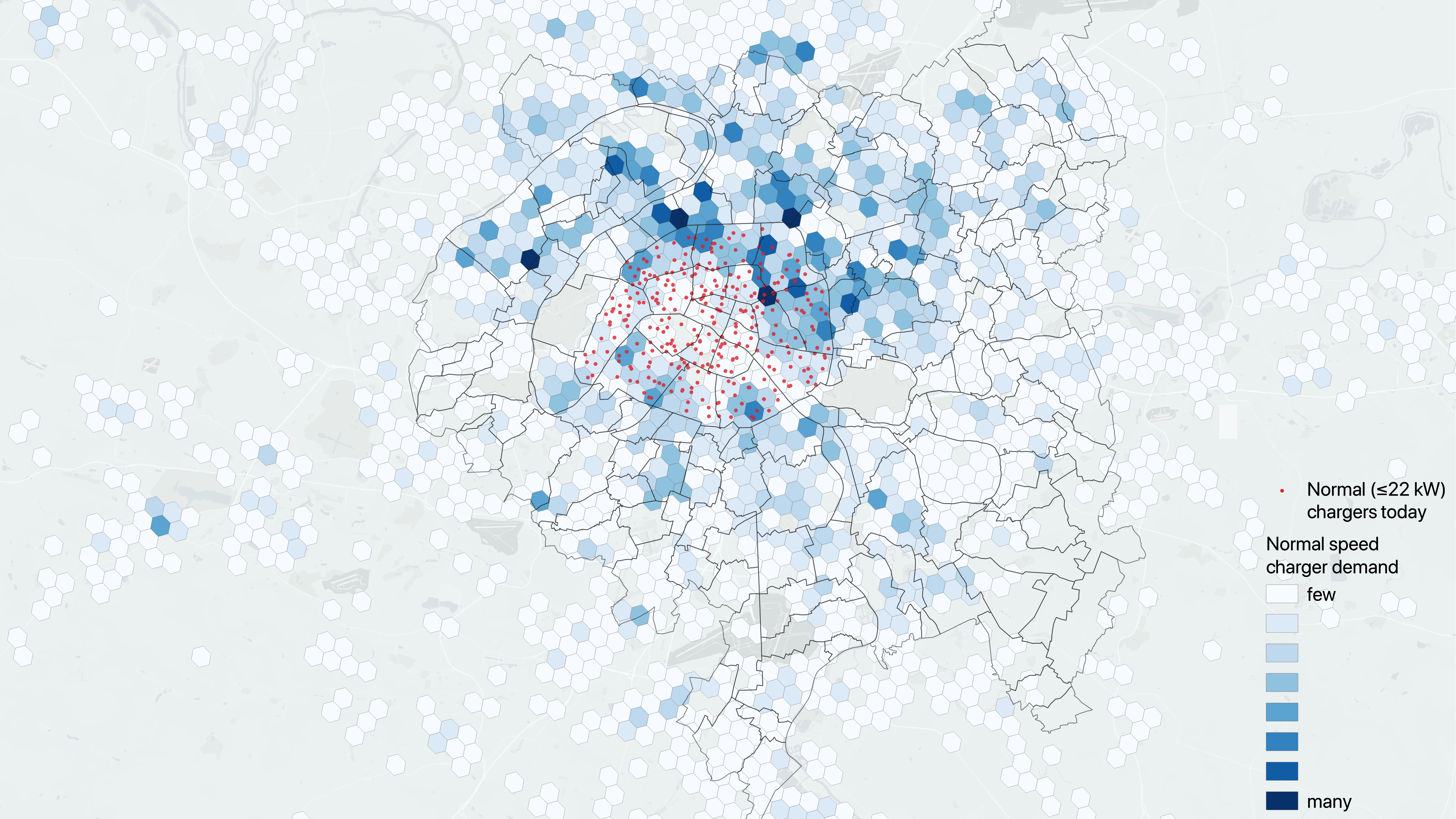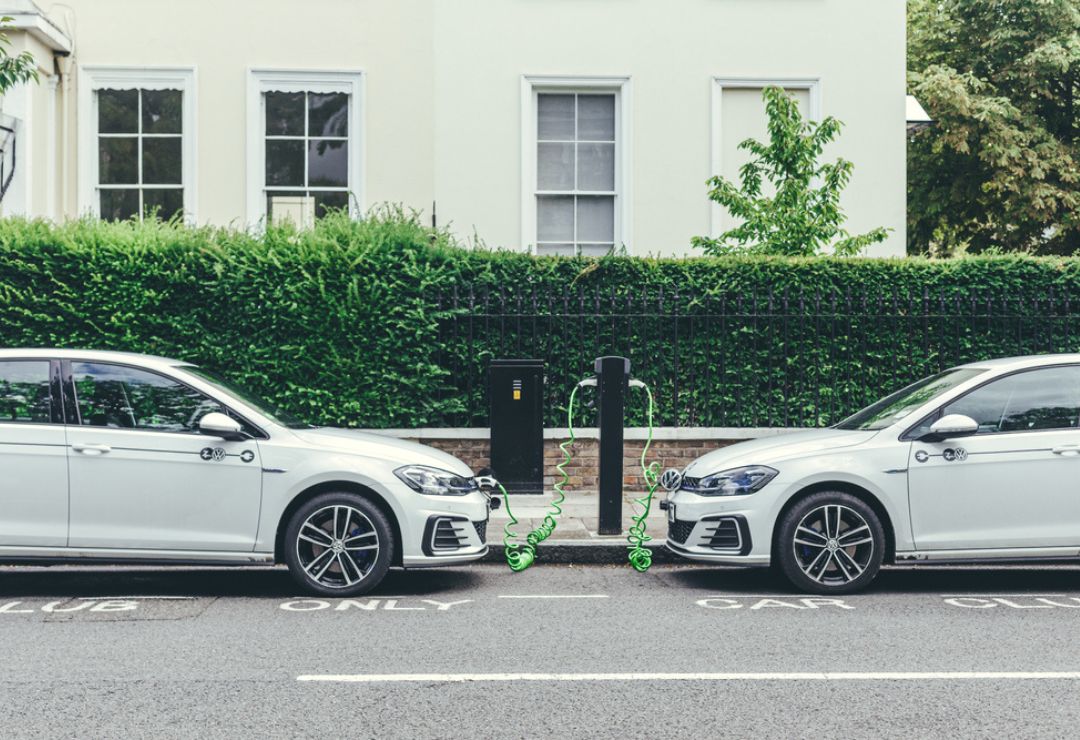Equal Access to EV-Charging Stations
Uber shares insights on how to optimise charging infrastructure through the lens of ride-hailing. Data shows a startling gap between charging supply and demand, notably in suburban areas. Explore how public-private partnerships and a demand-driven approach, can drive a more equitable, sustainable, and inviting future.
To listen to the recording of the article below, please accept all cookies.
In the bustling heart of the late 19th century’s industrial revolution, a technological solution began to reshape our streets: the automobile. Once a luxury reserved for the urban elite few, cars eventually spread to the wider society, driven by the dual engines of mass production and the widespread availability of gas stations.
It is remarkable how this transformation not only revolutionised transport, but also influenced urban planning, architecture, and even social norms.
Nowadays, the environmental revolution and the urgency to address climate change force us to rethink this paradigm: climate change is upon us, propelling the move from combustion engines to more sustainable options, amongst which we find electric vehicles. Sunday trips to gas stations may soon be gone; the future, this time, might (or shall) be powered by the widespread availability of charging stations, thus ensuring that charging stations are not only available everywhere, but also accessible to all. However, reality paints a different picture.
Ironically, just as cars were once the privilege of the wealthy in urban centres, today's EV charging stations are similarly concentrated in these areas, leaving many without access.
It is not just an inconvenience; it is an issue of social equity.
The ride-hailing example
Let us consider the case of ride-hailing drivers. These professionals transport numerous passengers in one day and cover 250 to 300 km daily on average. One of the key challenges for drivers to transition to electric vehicles is the low and unequal deployment of charging points: it is indeed estimated that ride-hailing drivers need to charge their cars at home overnight and sometimes stop once or twice during the day. As they need to stop driving and working to recharge their cars, which implicates halting the generation of earnings, having an easily accessible charging station wherever they stop would be crucial. Unfortunately, this is not the case today: the current setup effectively penalises those who are looking to make a greener choice.
Using public data on charging locations and its insights, Uber has been able to identify gaps in charging infrastructure and the result is clear: there is a shortage of chargers where ride-hail drivers live and work.
This is not just a problem for Uber, as it is also a bottleneck that potentially slows down the mass adoption of electric vehicles and hinders the progress towards the EU’s sustainability goals.

Visualisation of availability of charging stations in the Paris Region.
In Paris, for instance, in the areas where most drivers live, there is a notable scarcity of public and residential charging stations. On the contrary, the majority of charging stations are in the city centre, yet less than 15% of ride-hailing drivers live there. This disparity is even more striking considering that 65% of Parisians in the city centre do not own a car, while a significant portion of suburban residents rely on one or even two vehicles, largely due to the lack of access to public transport.
In contrast, in Amsterdam, more than 50,000 affordable charging stations have been deployed over the past years, mostly boosted by the ‘right to charge’ policy. Thanks to this demand-driven approach, charging stations were deployed where they were most needed, benefitting everyone: providers, users, and public authorities.
Incorporating a demand-driven approach, not only leads to better use, but also maximizes the positive environmental impact of every charging station.
Charging stations for all
If we are serious about the environmental revolution in the ride-hailing sector, we need to accelerate the fair deployment of charging stations in low-income areas. And this can only be achieved as a collective effort involving public authorities, charging operators, mobility players, and individuals.
Public-private partnerships could be the cornerstone of this much-needed revolution. The same goes for promoting significant investments in charging infrastructure in areas where high-mileage drivers live. Companies like Uber are ready to collaborate, providing data to ensure optimal station placement. Alongside this, Uber hopes to see increased financial support for at-home charging installations, especially targeting professionals who heavily rely on EVs – ride-hailing and taxi drivers, but also truck drivers or delivery operators.
Beyond the need to make charging stations available everywhere and to all, we should also reflect on the positive socio-economic impact that charging stations will likely have on cities and communities. The benefits can extend far beyond reduced carbon emissions and can serve as catalysts for community development.
Gas stations are embedded in our minds as places where we would go as families to tank the car and, at the same time, succumb to the temptation to buy biscuits or a soda at the shop.
Similarly, charging stations could become places where we come not only to recharge cars, but also community spaces where sustainability meets daily life – a unique occasion to stop by the coffee shop around the corner, do groceries, or have a quick walk in a park nearby.
 Charging stations can be designed to be far more inviting than traditional gas stations: no more terrible smells, oil puddles, blackened fingers, or grey walls, but wide open spaces that are completely integrated into urban landscapes and surrounded by nature.
Charging stations can be designed to be far more inviting than traditional gas stations: no more terrible smells, oil puddles, blackened fingers, or grey walls, but wide open spaces that are completely integrated into urban landscapes and surrounded by nature.
The rollout of this new charging infrastructure would not just be a technical shift. It would represent a transformational opportunity to reshape our urban environments and lifestyle choices for the better. It would be an invite to reconsider what sustainability can look like in our day-to-day activities, as well as how we interact with the world around us – a chance to seize the moment and create not just a network of charging stations, but a blueprint for a more sustainable, equitable, and vibrant future.
Click here to read the article in its original format.
About the author:
Santosh Rao Danda is the Global Lead for Sustainability on Mobility at Uber. He is responsible for Uber’s progress on Sustainability on the Mobility side of the business. Previously, he was an Applied Scientist on Uber’s Research and Economics team focusing on urban mobility. He is based in Amsterdam.
